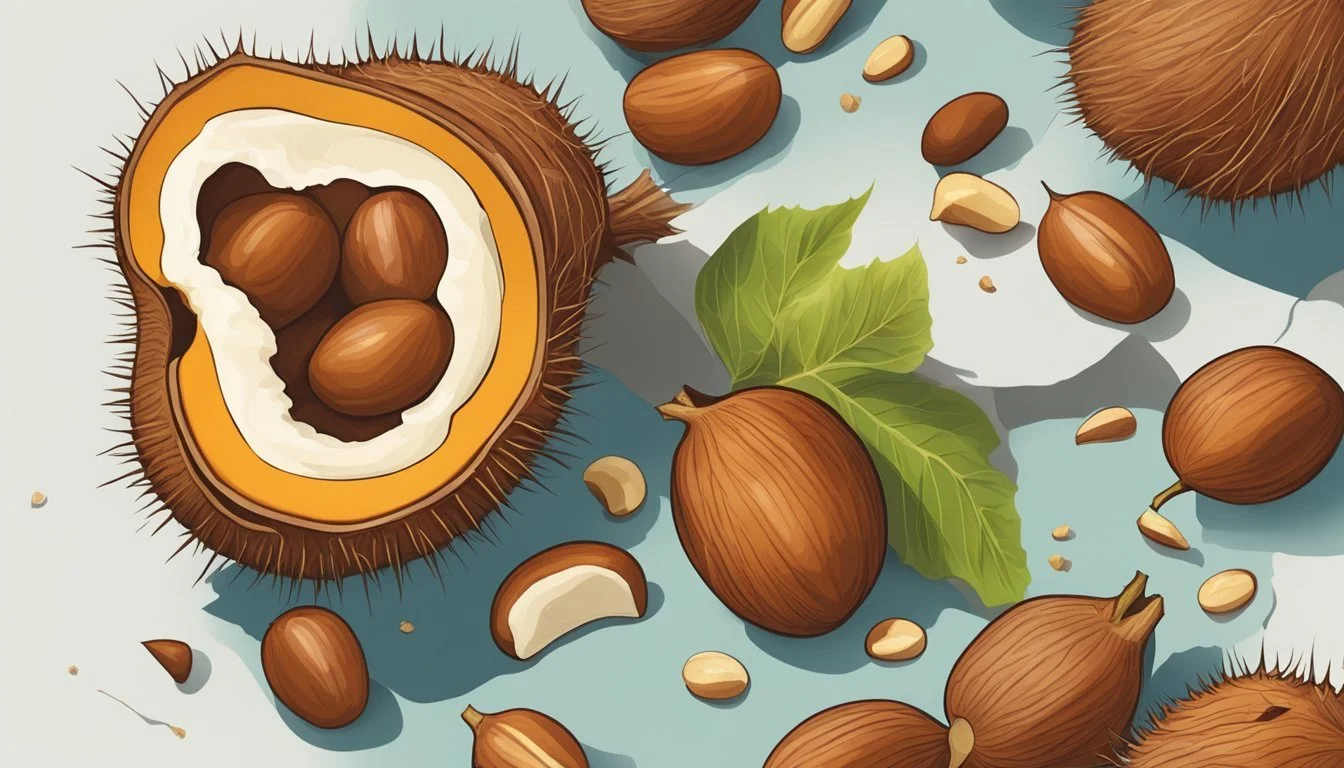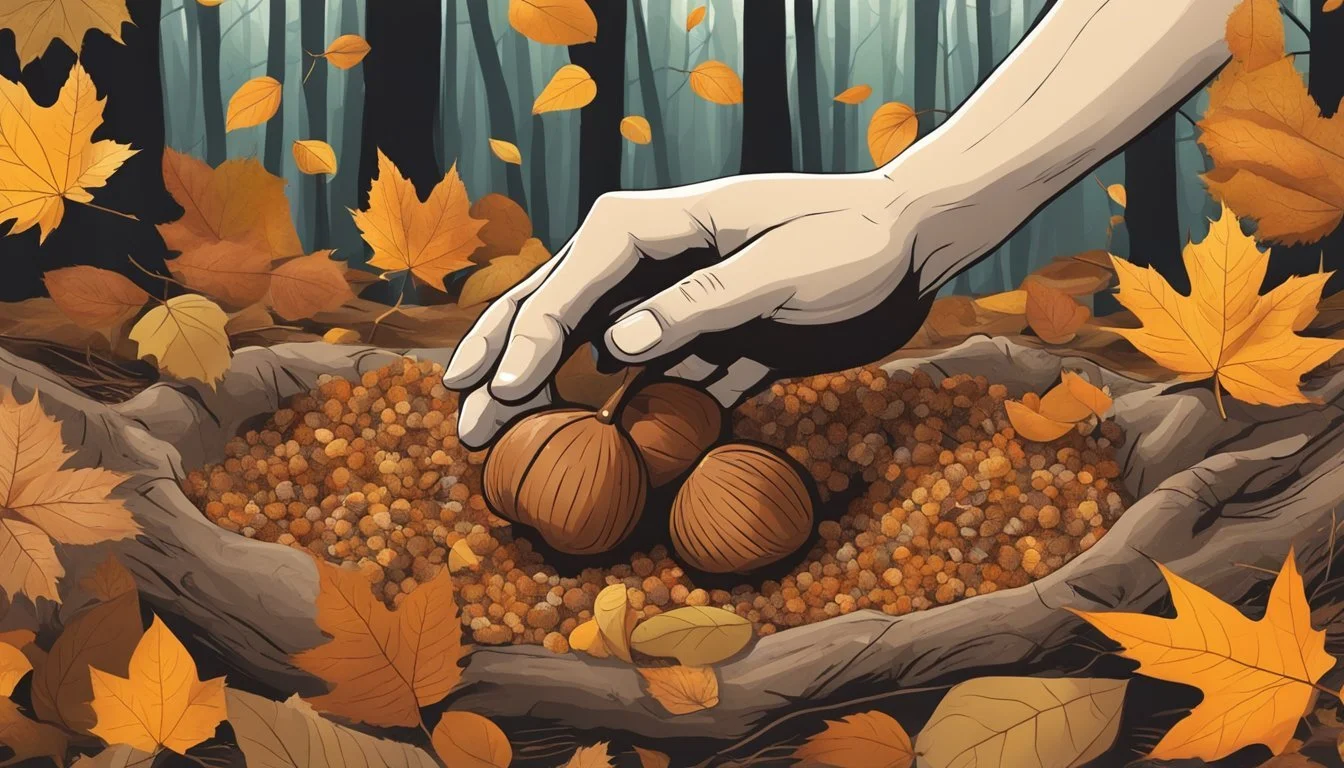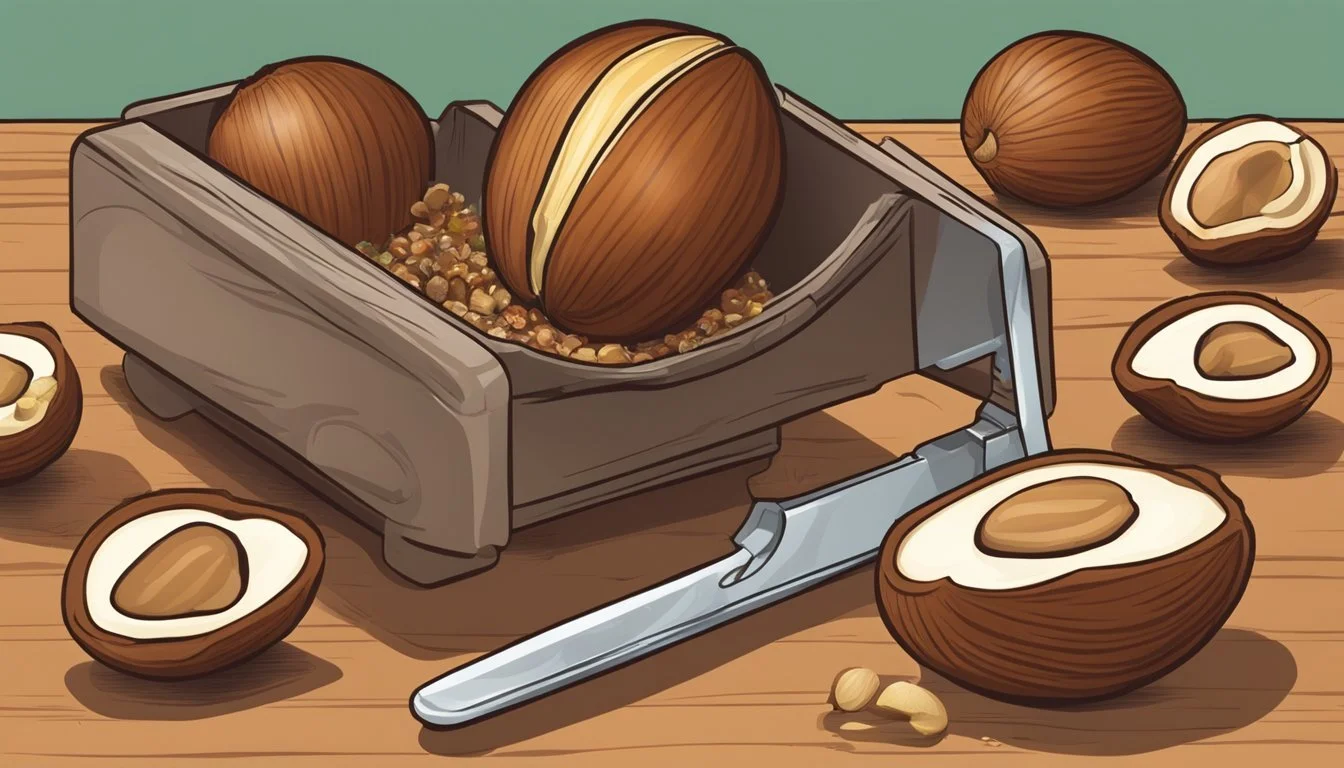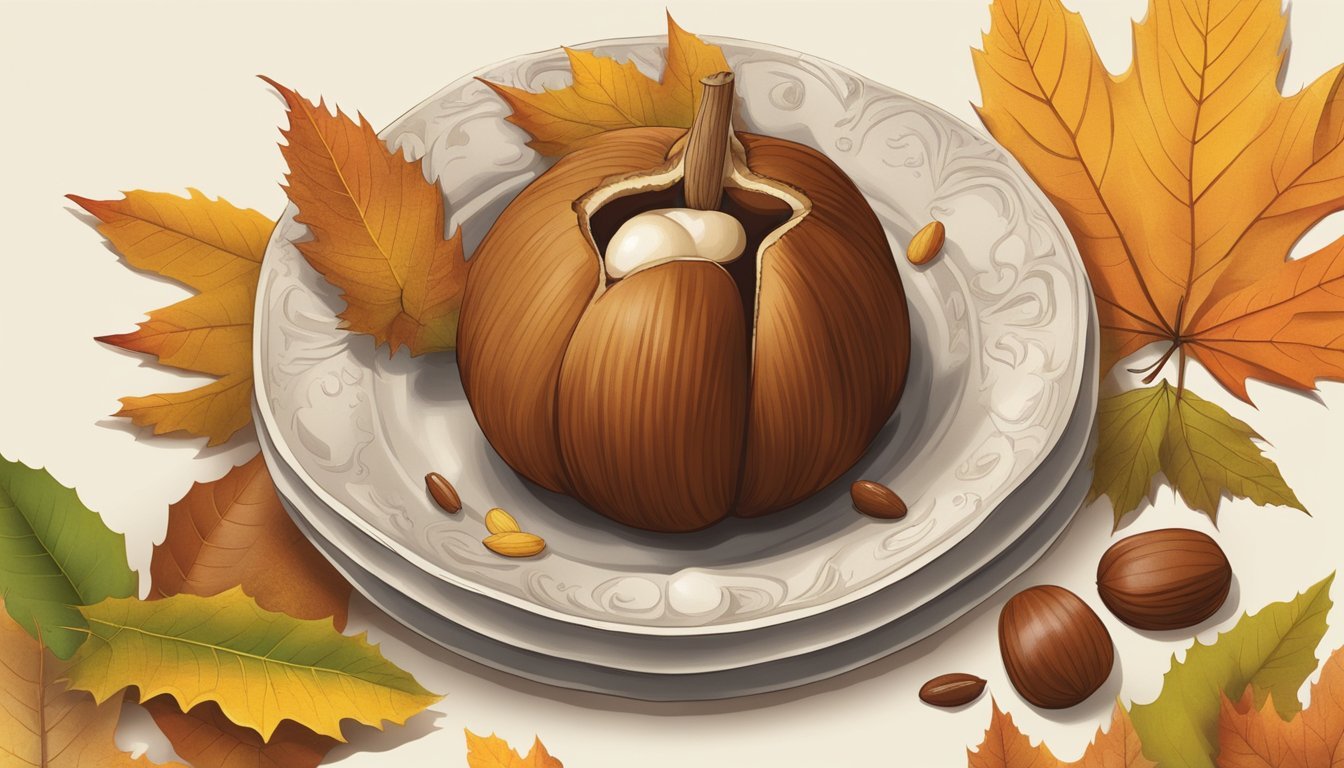How do you eat a chestnut?
Unveiling the Simple Steps to Enjoy this Nutty Treat
Chestnuts are a versatile and nutritious treat that can be enjoyed in various ways. They boast a sweet, nutty flavor that is particularly associated with the autumn and winter seasons. While they can be consumed raw, cooking chestnuts enhances their flavor and makes them easier to peel. The process begins with scoring the chestnuts, which involves making a cut on the flat side of the nut. This step is crucial as it allows steam to escape during cooking, preventing the chestnuts from bursting and making them easier to peel after they are cooked.
To prepare chestnuts, one popular method is roasting. This can be done in an oven or over an open fire, which imbues the chestnuts with a smoky flavor. Roasting in an oven typically involves heating the chestnuts at a temperature of around 400 degrees Fahrenheit for approximately 15 to 20 minutes, while stirring occasionally to ensure even cooking. Alternatively, chestnuts can be cooked in a pan, where they are turned frequently for a similar duration. After cooking, it is best to serve chestnuts warm, which also aids in the peeling process.
Aside from traditional roasting, chestnuts can be creatively incorporated into various dishes. They can be added to sweet and savory recipes alike, from chestnut-stuffed quiche (What wine goes well with quiche?) to gourmet pizza toppings. (What wine goes well with pizza toppings?) The soft, crumbly texture of cooked chestnuts complements a multitude of flavors, making it a delightful ingredient for seasonal cooking. It's the combination of their unique taste and the comforting experience of preparing and peeling them that makes eating chestnuts a much-anticipated activity during the colder months.
Selecting Chestnuts
Selecting the right chestnuts is crucial for enjoying their unique flavor and texture. Freshness, quality, and understanding chestnut types are all important factors in making the best choice.
Freshness and Quality
When selecting fresh chestnuts, one should look for nuts (What wine goes well with nuts?) that are firm and have a glossy brown surface without any cracks or holes. The shell should be intact, and the nut should feel heavy for its size, indicating that it is not dried out. Freshness can also be assessed by shaking the chestnut; absence of rattling suggests the interior is still plump and moist. Raw chestnuts should be kept cool and dry until use to maintain freshness.
Types of Chestnuts
There are multiple types of chestnuts available, each with subtle differences in flavor and texture. The most commonly consumed varieties include the American, European, Chinese, and Japanese chestnuts. It's imperative to avoid horse chestnuts, which are inedible and toxic if consumed. They can be distinguished from edible varieties by their rounded shells with a point on one side and flatter seed surfaces. Edible chestnuts, on the other hand, typically have a tassel on one end and a flat side on the other, with a more elongated shape.
Preparation Before Cooking
Before cooking chestnuts, the preparation process is crucial to ensure the chestnuts are safe to eat and flavorful. This involves both cleaning and making precise incisions for proper cooking.
Washing and Drying
One must begin by thoroughly rinsing chestnuts under cold water to remove any surface dirt or debris. After washing, it is important to completely dry the chestnuts using a clean cloth or paper towel to prevent them from steaming rather than roasting during the cooking process.
Making Incisions
Making incisions on the chestnuts is a critical step that requires attention to detail. One should place each chestnut on a cutting board with the flat side down. Using a serrated knife, which provides a better grip on the hard skin, carefully cut an "X" into the rounded side of the chestnut. This incision should be deep enough to penetrate the skin without cutting into the nutmeat. These incisions allow steam to escape and prevent the chestnuts from exploding due to internal pressure.
Steps for Making Incisions:
Lay chestnuts on a cutting board, flat side down.
Using a serrated knife, apply gentle pressure to score an "X" on the round side.
Ensure cuts penetrate the skin to allow steam to release.
Methods of Cooking
When preparing chestnuts, one can employ various methods to unlock their unique flavor and texture. Each technique may require specific steps to ensure the chestnuts are cooked thoroughly and are easy to peel.
Roasting Chestnuts on an Open Fire
Instructions: First, chestnuts should be scored with an "X" on the flat side to allow steam to escape. They are then placed on a cast iron skillet or a special roasting pan and cooked over an open fire. One should continuously turn the nuts to prevent burning. Duration: Typically, chestnuts will roast in about 15-20 minutes over a medium fire.
Oven-Roasting
Instructions: To oven-roast chestnuts, preheat the oven to 400ºF (205ºC) and place scored chestnuts on a baking sheet. The chestnuts should be roasted until the shells are dry and peel back at the score marks. Duration: Approximately 15-30 minutes, depending on size and oven.
Boiling in Water
Instructions: Place chestnuts in a pot of cold water, then bring to a boil. Once boiling, reduce heat slightly but maintain a vigorous simmer. Boiling makes them tender and easy to peel. Duration: Chestnuts should boil for about 15-20 minutes.
Microwave Technique
Instructions: Slit the chestnuts on the flat side and place them on a microwave-safe plate. The microwave's heat will create steam inside the shell, making them easier to peel. Duration: The chestnuts typically need one or two minutes on high power, depending on the microwave.
Steaming
Instructions: Using a steamer, scored chestnuts should be arranged in a single layer. Steaming allows the chestnuts to cook evenly while retaining moisture, making for a soft texture. Duration: They are generally steamed for about 15-20 minutes.
Grill and Fireplace Options
Instructions: One can roast scored chestnuts over a grill or in a fireplace using a long-handled roasting pan or aluminum pie plate with holes. It's important to shake the pan occasionally to evenly roast the chestnuts. Duration: Over white-hot coals, chestnuts typically take 15-20 minutes to cook.
Peeling and Eating
Before enjoying chestnuts, it's essential to master the skill of peeling, keeping in mind the right technique ensures a smooth culinary experience. The following provides a clear guide on methods to peel chestnuts effectively and advice for a satisfying eating experience while prioritizing safety.
Peeling Techniques
Roasted Chestnuts: Make an X on the flat side of the shell using a chestnut knife before roasting to facilitate easier peeling. Roast on a baking sheet in an oven preheated at 200°C (392°F) for approximately 15-20 minutes until the shells start to peel back.
Steaming Method: For those preferring to steam, score the shells and place the chestnuts in a steamer basket over boiling water, cover, and steam for about 20 minutes until the shells can be pulled apart easily.
Microwaving: Scoring the shells is also necessary before microwaving chestnuts. Microwave on high for approximately 6 minutes, again looking for the shells to begin peeling back.
Tools: A chestnut knife or a sharp knife for scoring, and protective gloves can help in handling hot chestnuts.
Eating Guide
After peeling, chestnuts can be eaten warm or cold. They should be tender to the bite or when pricked with a toothpick. One can use a slotted spoon to handle and serve chestnuts when they are warm to avoid burns. Be mindful not to ingest the inner skin of the chestnut, as it can be bitter.
Safety Tips
Always score chestnuts before heating to prevent them from bursting due to expanding steam.
Use caution when peeling hot chestnuts to avoid steam burns; allowing them to cool slightly makes this safer.
Inspect peeled chestnuts closely; do not consume any chestnuts that show signs of mold or spoilage.
When peeling and eating chestnuts, the effectiveness of the chosen technique and adherence to safety precautions will ensure an enjoyable experience with this seasonal delicacy.
Storing Chestnuts
Proper storage of chestnuts is crucial to maintaining freshness and preventing spoilage, as they are perishable. Optimal storage conditions can vary based on the intended duration of storage.
Short-Term Storage
For keeping chestnuts fresh for a few weeks, one should place unpeeled chestnuts in the refrigerator. It’s recommended to use a plastic bag with multiple holes to allow for airflow and prevent mold. Ideally, chestnuts should be placed in the vegetable compartment of a fridge, maintaining a temperature between 33-35°F (0.5-1.7°C) with high humidity, around 90%.
Steps for Short-Term Fridge Storage:
Place unpeeled chestnuts in a punctured plastic bag.
Store in the vegetable bin of the fridge.
Long-Term Storage
Chestnuts intended for long-term storage require drying to prevent mold and deterioration. One method is to use a dehydrator, setting it to 100 degrees Fahrenheit. Shelled chestnuts take approximately two days, while unshelled require three days to dry properly. Once dried, they can be sealed in airtight containers, such as jars or cans, and stored for up to two months. When ready to use, simply soak chestnuts in water overnight to rehydrate them.
Steps for Long-Term Storage:
Dry chestnuts using a dehydrator at 100°F.
Shelled: 2 days
Unshelled: 3 days
Store dried chestnuts in airtight containers.
Rehydrate by soaking in water before use.
Chestnut Dishes and Recipes
Chestnuts offer a unique flavor and versatility that can be showcased in a variety of dishes from simple snacks to complex culinary creations. Their buttery texture and sweet, nutty taste make them a delightful ingredient in the kitchen.
Simple Chestnut Recipes
Chestnuts can be enjoyed in their simplest form by roasting. Roast chestnuts often require only a drizzle of olive oil and a sprinkle of salt. For a quick and easy savory dish, one can sauté sliced chestnuts with butter, thyme, and rosemary for a fragrant and filling side.
Roasted Chestnuts: Toss with olive oil, salt, and optional herbs.
Sautéed Chestnuts: Fry with butter and aromatic herbs until golden.
Chestnut as Ingredient in Complex Dishes
As a substantial ingredient, chestnuts enhance the flavor profile of diverse dishes. They can be incorporated into stuffings for protein like chicken or turkey, bringing a sweet and nutty flavor. Chestnut puree can be used as a base for sauces to accompany meat or vegetable dishes like Brussels sprouts. They also meld well in casseroles with sweet potatoes for a hearty meal.
Chestnut Stuffing: Combine with breadcrumbs, eggs, and herbs for a rich filler.
Chestnut Puree: Blend with butter and seasonings for a smooth sauce.
Sweets and Desserts
Chestnuts seamlessly transition into the realm of desserts, where their natural sweetness is accentuated. A tart can be made from chestnut flour, delivering a gluten-free base with a dense, crumbly texture. They can be candied for a sweet topping or used as a garnish on ice cream. For a twist on traditional sweets, chestnut puree offers a creamy, buttery component to pastries.
Chestnut Flour Tart: Use as a base for tarts or quiches, offering a dense texture.
Candied Chestnuts: Great as a garnish on desserts or mixed into sweet creams.
Incorporating chestnuts into dishes can elevate the flavor and create a memorable dining experience. Whether used in simple roasts or as the main ingredient in elaborate meals and desserts, chestnuts add a depth of flavor that is unmatched in the culinary world.
Nutritional Information
Chestnuts include a unique nutritional composition when compared to other nuts. They provide a blend of vitamins and minerals beneficial for overall health.
Macro and Micronutrients
Chestnuts are rich in carbohydrates, primarily in the form of starch, and lower in fat than many other nuts. A serving size of about 10 roasted chestnuts (approximately 84 grams) contains the following:
Calories: 206
Protein: 2.7 grams
Total Fat: 1.9 grams
Total Carbohydrates: 44.5 grams
Dietary Fiber: Around 4 grams
Chestnuts are especially notable for their vitamin C content, unusual for nuts, as they provide a substantial amount essential for immune health and collagen synthesis. They also contain a spectrum of B vitamins, minerals like potassium, and various antioxidants.
Dietary Considerations
Chestnuts are ideal for those who seek a lower-fat nut option with essential nutrients. Their starch content delivers energy, making them a satiating snack, while their fiber promotes digestive health.
For individuals monitoring their calorie intake, chestnuts offer a comparatively lower calorie option with 206 calories per 84 grams, less than many other nuts. This, coupled with their micronutrient diversity, makes chestnuts a valuable addition to a balanced diet.
Alternative Uses and Substitutions
In exploring the versatility of chestnuts, one may find both non-traditional applications and a variety of substitutes that can mimic their unique qualities in recipes.
Non-Traditional Uses
Chestnuts don't have to be confined to traditional roasting. They can serve as a natural thickener in soups and sauces due to their starchy composition. Additionally, ground chestnuts can be used as a gluten-free flour alternative in baking, providing a nutty flavor to breads and pastries.
Substitutes for Chestnuts in Recipes
When chestnuts are unavailable or someone seeks a different flavor profile, several substitutes can be used in their place. Texture and taste are the primary considerations when selecting an alternative. Here are some specific replacements:
Sweet Potatoes: With their soft, creamy texture once cooked, they are an excellent choice for purees or stuffings.
Carrots: When roasted, they develop a sweet and earthy flavor, making them a good match in souces or as a roasted vegetable side.
Walnuts: These nuts have a similar texture to chestnuts and can be used in stuffings or as a crunchy addition to salads.
Pecans: Having a buttery and slightly sweet taste, pecans are ideal in baked goods as a one-to-one substitution for chestnuts.
These substitutes should be chosen based on the desired outcome of the recipe, considering both flavor and textural elements.
Seasonal and Cultural Significance
Chestnuts have a rich seasonal and cultural significance, often associated with holiday traditions and regional practices across various cultures, particularly during the winter months.
Chestnuts in Holiday Traditions
In the context of holiday traditions, chestnuts are particularly celebrated through the Christmas season. The classic Christmas song "The Christmas Song," commonly known as "Chestnuts Roasting on an Open Fire," highlights the nut's association with holiday warmth and festivity. This tradition is prevalent in many European and Asian cultures, where chestnuts are not just a culinary delight but also a symbol of togetherness and joy during the cold winter season.
Europe: In several European countries, chestnuts are a staple during the Christmas market season, often roasted and sold as a treat to warm up shoppers.
Asia: In Asian traditions, chestnuts carry symbols of prosperity and are used in various dishes during festive occasions.
Regional Practices
The consumption and use of chestnuts vary across different regions, reflecting the local practices and the significance of the nut in their cultures.
Europe: In Europe, apart from being a common sight at Christmas markets, chestnuts are also used in a variety of seasonal dishes and desserts.
Country Common Chestnut Preparation Italy Used in stuffings and sweet marron glacé. France Incorporated into desserts like Mont Blanc.
Asia: Chestnuts form part of the culinary landscape in Asia, frequently found in both sweet and savory dishes during the holiday season and other celebratory events.
Country Chestnut Use China Symbolizes success; included in New Year dishes. Japan Prepared as 'kuri', often found in Wagashi sweets.
Across these regions, the use of chestnuts is deeply rooted in local customs and is integral to holiday feasting and celebrations.






